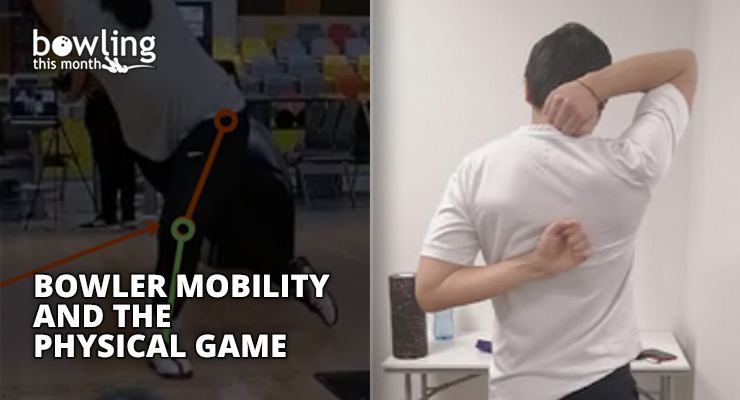Article Contents
- 1. A simple analysis
- 1.1. Identifying the root cause
- 1.2. Everything is connected
- 2. Testing bowler mobility
- 2.1. Deep squat
- 2.2. Hurdle step
- 2.3. Inline lunge
- 2.4. Shoulder mobility
- 2.5. Hip mobility
- 2.6. Core stability
- 2.7. Rotational stability
- 2.8. Other tests
- 3. Functional movement applied to bowling
- 3.1. Pain in the neck
- 3.2. Swing out of alignment
- 3.3. Knee pain
- 3.4. Popping up at the line
- 4. Final thoughts
Note: This article is only available to Bowling This Month subscribers.
He has 47 PBA titles, including eight majors, along with 16 PBA50 titles that include three majors. And yet, somehow in my 25 years of coaching the sport of bowling, not a single person has ever said to me, “I want to bowl like Walter Ray Williams, Jr.”
Walter Ray is unique. But if you look at the top bowlers in the game, none of them quite look the same. Despite being able to identify certain similarities in technique, you’ll never be able to line up two bowlers and have them look identical. Why is this?
Everyone’s personal style is defined by their body shape and their mobility. Every great bowler develops a style that works with what their body can do, along with trying to create an effective bowling motion. In this article, we’ll discuss the importance of a bowler’s unique physical traits, explore how to screen for specific mobility issues, and look at some specific examples of bowlers’ games.
A simple analysis
Like most coaches, I use a standard method to do a simple analysis of a bowler’s game:
- I use the Blink concept and simply watch the entire approach of an athlete. Something will often jump out at me that needs some attention.
- Next, I do a thorough analysis starting from the bottom: alignment, foot position, footwork, body position, etc.
This is the most obvious and typical way to identify an error in someone’s game according to the knowledge we have. However, it is a mistake to go through this process and immediately try to correct whatever mistakes we see. Why? Because, as former Team USA Head Coach Rod Ross says, “Everything is cause and effect.”
Identifying the root cause
Most coaches are aware of the cause-and-effect relationship of certain physical elements of the bowling approach. Underrotating the torso, for example, will usually limit the height of the backswing. But what if underrotating the torso is an effect of something else that needs to be addressed?
Many coaches look at cause-and-effect within the scope of the bowling approach. What we really want to do is take the time to look at the potential causes within the bowler’s body itself. Usually, the only place we look at the bowler’s body is when fitting a ball and we examine everything about ...
Already a premium member? Click here to log in.


 (Only
(Only 